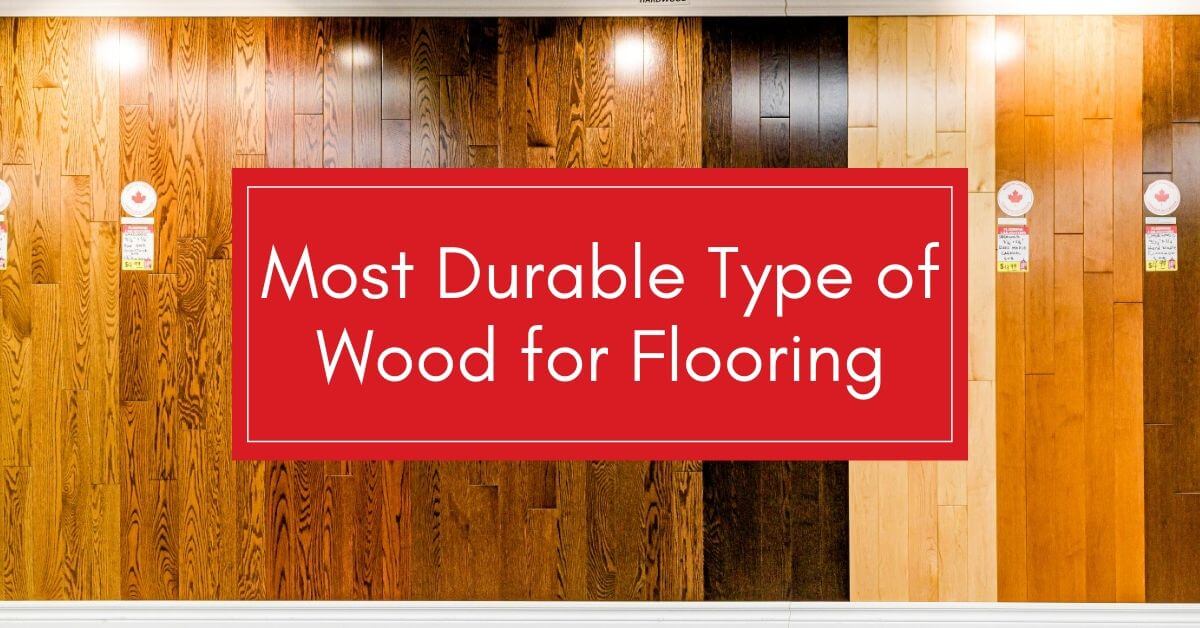Flooring Tips, Hardwood Flooring
The Most Durable Wood Type for Flooring
When picking new flooring for your space, you can easily go with a cheap option that won’t cost you a lot in the short term. However, before long, cheap flooring options will begin to chip, crack, warp, and experience other forms of damage. This means that the flooring will have to be replaced, which will end up costing a lot more than if you went with a more pricey option.
The better option is to go with high-quality, durable hardwood. When it comes to the durability of hardwood, it’s not as simple as saying one hardwood is durable and one is not. There are different degrees of durability for wood, and luckily, there is a rating system to determine a wood’s durability. This rating system is called the Janka scale.
The Janka scale is an impact test used to measure the hardness of common woods The test consists of wearing and denting a piece of wood to see just how durable and hard it is. A small steel ball is pushed into a sample of the wood and the amount of force it takes to embed the ball into the wood is the determining factor of the Janka score.
The main purpose of the Janka test is to see if the wood in question is suitable as flooring. This is why we will be using the Janka scale here to determine which flooring is the most durable.
Oak
Oak is one of the most durable woods you can get. It has a tight, dark grain and is one of the more popular choices for hardwood flooring. It is a little more cost-effective than other durable woods you will find due to its availability.
There are many different types of Oak such as Red, and White Oak, with each offering different durability. Oaks durability is well documented with homes built at the end of the 19th century still having their original Oak flooring intact.
Red Oak sits at 1290 on the Janka scale and White Oak sits at 1360.
Maple
Maple stands next to Oak as one of the more popular hardwood materials you’ll find for flooring. Maple holds beautiful patterns and colours which give it a distinctive look. Maple works best in contemporary spaces due to its natural finish and subtle grain patterns.
Though Maple doesn’t take well to staining, its natural colour is aesthetically pleasing on its own. There are some variations in Maples aesthetic depending on where it was harvested from. Maple harvested from the outer wood of the trunk usually has a lighter white colour, while Maple harvested from closer to the center of the tree has more dark browns and reds.
On the Janka rating scale Maple sits at 1450.
Hickory
Hickory is one of the densest flooring options available. Unfortunately, hardwood isn’t a popular option so you won’t easily find it when shopping around. Hickory has a similar style to Oak but it is the harder of the two and somewhat more pricey.
Hickory is reddish-brown in colour with natural dark brown stripes but when it is harvested from the outer wood it can be white with hints of pink and brown lines. Its unique graining pattern is slightly less prominent than that of ash or oak.
The Janka rating of Hickory is 1820.

Brazilian Cherry
Brazillian cherry wood comes from 100 to 130-foot trees from the rainforests of Brazil. It has a deep red colour and is an extremely hard wood. It takes to staining and finishes very well, which is why it is a popular flooring choice.
The installation of Brazilian cherry solid hardwood planks will require assistance from professionals but it is also a hard engineered wood for those who would like to install it themselves.
Brazilian cherry’s Janka hardwood rating is 2350.
Bamboo
Bamboo is a popular choice for flooring due to its appearance and incredible durability. Bamboo actually comes from grass, yet it is harder than both oak and maple. Bamboo’s durability depends on three things, stalk placement, added materials, and the quality of the bamboo that is used.
Bamboo is typically made by laying bamboo grass stalks in a cross-direction and then adhesives are added, with the more adhesives used, the more durable the bamboo becomes. With the quality of bamboo, it can be hard to tell when shopping around, but the later-harvested bamboo is more durable than bamboo that was rushed to harvest.
Traditionally constructed bamboo rates around 900-1300 on the Janka scale. Strand-woven bamboo rates around 2000-3200 which peaks the Janka scale.
These are 5 of the most popular and most durable hardwood options available. Through the use of the Janka scale, it is clear to see that bamboo is the more durable material to use for hardwood flooring. However, if you aren’t into the look of bamboo, the durability of the other options are nothing to take lightly. Most of these options will last well over 100 years and have a natural beauty that you can only get from real wood.
If you are looking for quality solid and engineered hardwood flooring, visit your nearest Flooring Liquidators location or call us at 1 (866) 473-7222 for more information. We have locations across Southern Ontario, including cities like Toronto, London and Oshawa. Use our Store Locator to find a location near you.
We stock a wide variety of solid and engineered hardwood flooring products to suit every preference and budget. Feel free to ask our helpful team for professional advice as well as product details that will allow you to make an informed decision. Whether you want to give you home or business a new look, we have the perfect quality flooring solutions for you!






